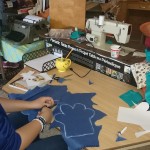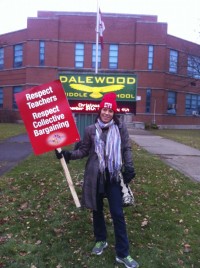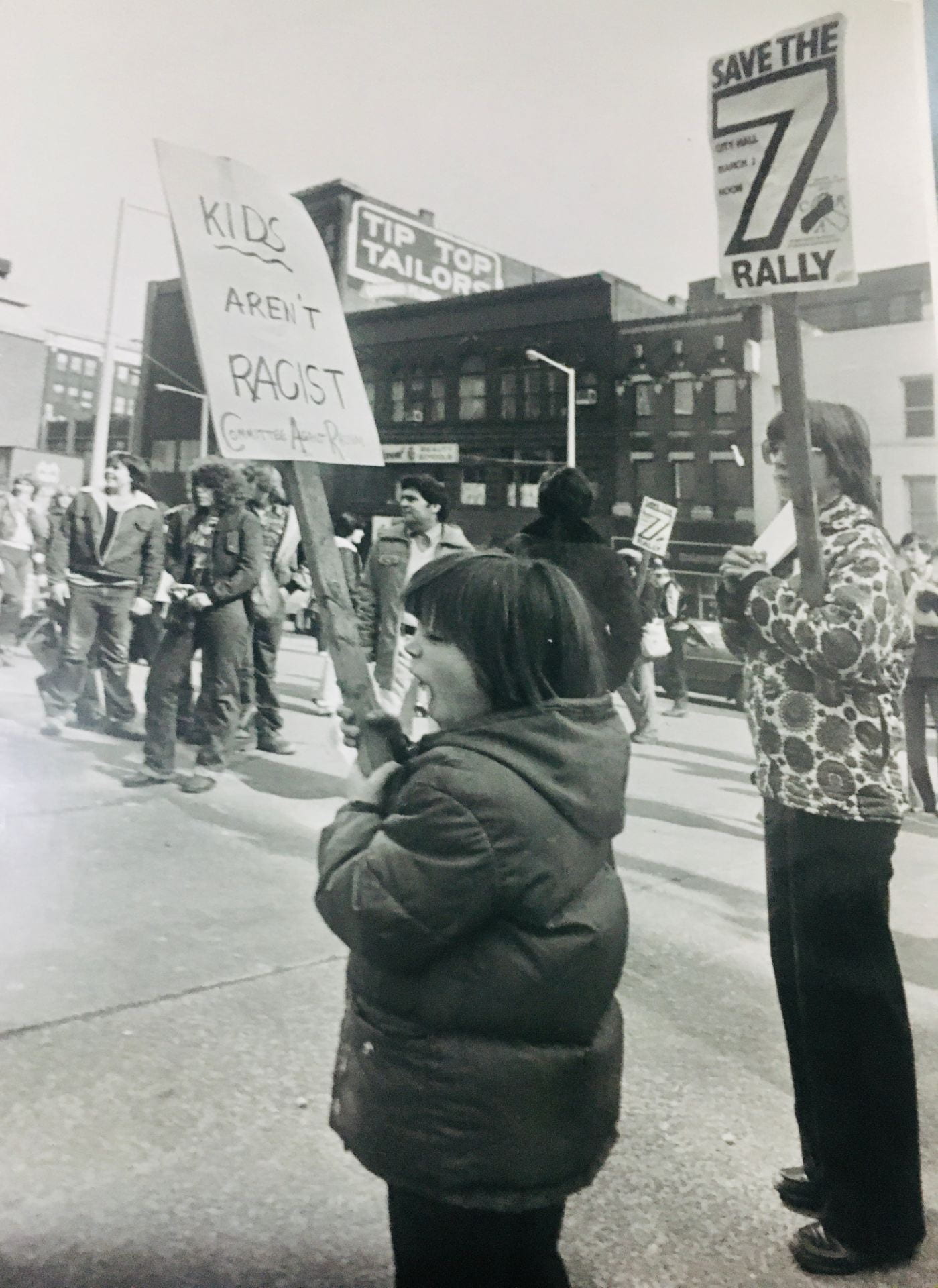 I have students attend my After School Program (STEM focused Makerspace) every Wednesday who struggle in their regular school. Many of these students struggle academically and socially. Yet, these same students, at the Makerspace, perform skills and engage in social and academic activities that demonstrate knowledge of math, science, engineering and ARTs with a proficiency beyond their age and grade level and with a strong level of motivation and confidence. It is often confusing for them for their parents. It got me thinking about the amount of Learning Disabled and Gifted students we see on a regular basis. Students that struggle to find and demonstrate ways that show what they know.
I have students attend my After School Program (STEM focused Makerspace) every Wednesday who struggle in their regular school. Many of these students struggle academically and socially. Yet, these same students, at the Makerspace, perform skills and engage in social and academic activities that demonstrate knowledge of math, science, engineering and ARTs with a proficiency beyond their age and grade level and with a strong level of motivation and confidence. It is often confusing for them for their parents. It got me thinking about the amount of Learning Disabled and Gifted students we see on a regular basis. Students that struggle to find and demonstrate ways that show what they know.
I had a conversation with two students this week, both from different areas of the city, different grades and from different school districts and yet both had the same story to tell. I highlight these conversations here to demonstrate the dichotomy with how students are performing in regular classes and how they are performing in self-driven Makerspaces outside class time.
Note: A Makerspace is defined as a learning environment that is designed around the concept of making, creating, designing and innovation. These spaces bring in the ART with Math, Engineering, Science and Technology and allow for a good degree of autonomous, self-paced and passion passed learning.
I write this post in hopes that parents and teachers read it and begin take a second look at the child/learner in front of them. What if the student is LD (Learning Disabled) but is also highly intelligent, highly gifted, highly creative? What if WHAT the student needs is to be surrounded by other students and learners how are engaged in hands-on learning activities? What if the student’s IEP (Individual Education Plan) could be based on STRENGTHS instead of WEAKNESSES? Regardless of the test result (CCAT, Report Card, EQAO) could the child be Gifted?
 “My teachers thought I was dumb”. “I thought I was dumb” – Grade 10 Student.
“My teachers thought I was dumb”. “I thought I was dumb” – Grade 10 Student.
Interestingly, in their middle school years, the students I spoke with, were tested as “highly Gifted” and both were deemed as “Dual Exceptional”. This means, that they were both Gifted as well as Learning Disabled. You can compare the LD (Learning Disabled) to wearing glasses. Without the glasses, many people would be debilitated, wouldn’t perform, would be unable to complete tasks.
The idea of dual exceptional students is confusing for teachers or parents since LD (Learning Disability) is often affiliated with intelligence (even though this is incorrect). If a student is not completing their work, cannot make decisions, struggles with problem solving or self-regulation, is impulsive or behaviour, is slow in grasping a concept and has high anxiety, how could they possibly be Gifted? Shouldn’t they know better?
To complicate matters, the GIFTED student with LD may need specific accommodations but the content, the grouping, how the content is delivered, the level of content might need additional modifications. Are we accommodation for the Learning Disability as well as the Giftedness? Many times, these LD gifted students require opportunity to work with other Gifted Students. But many times, because of there LD, the teacher may be focusing on assisting the student with these deficits rather than enriching the curriculum, instruction and learning. Thus, the student is working with their LD counterparts rather then there Gifted counterparts.
This article gives some great insight about Gifted and LD students: “What teachers need to know”
http://ldatschool.ca/assessment/gifted-students-with-lds-what-teachers-need-to-know/
This article shares research about the value of homogenous classes and how these congregated classes server the needs of Gifted students, differently than other types of homogeneous special needs classrooms.
http://www.tandfonline.com/doi/abs/10.1080/02783190209554146
Intellectually gifted individuals with specific learning disabilities are the most misjudged, misunderstood, and neglected segment of the student population and the community. Teachers, school counselors, and others often overlook the signs of intellectual giftedness and focus attention on such deficits as poor spelling, reading, and writing. (Whitmore & Maker, 1985, p. 204)
One student shared his story with me. In elementary school, his teachers were so concerned about his ability to learn as well as his lack of motivation that they recommended he be put in a self-contained/congregated class for Learning Disabled and ‘Developmentally Disabled’ students. According to his teachers, his reading and writing were far behind the other students. He didn’t read until after his first grade and was seen as being far behind his peers in Math. The problem wasn’t his understanding of the concepts, but instead HOW he learned them. He couldn’t retain information (working memory) and he processed information with difficulty and very slowly but he could spend hours focused on learning one specific task. So, he was described as being “Slow” and of course this was reflected on his report card and also reflected how the teacher treated him as well as programmed for him. He tells me that even from an early age, he was drawn to creative, hands-on activities – especially those that focused on building (lego, for instance) but these tools and choices were only provided when his other work was complete (which was rare). The psycho-educational assessment eventually identified him as being Gifted with a Learning Disability. The student laughed aloud when he shared this with me. He thought it was a joke. He was always seen as the ‘dumb one’. He looked around the room and noted that he wasn’t the only one with this story. Today, this student is a lead programmer and builder for an award winning Robotics team. Many would argue, that while he continues to struggle in some areas of academia, the expert computer science , engineering, and programming skills are those that are needed more than ever in our society.
Still, what I notice over in over in my job as a teacher for gifted is a dichotomy between the assessment and evaluation (and consequently programming) of the student and what the student actually knows and is capable of, his/her level of thinking. The evaluation is sometimes focused on the learning disability rather than what the student knows about the material (the how versus the what).
I wonder how many VERY INTELLIGENT, CREATIVE and OUTSIDE THE BOX THINKING students are misrepresented because they are seen as behavioural or slow?
It is important to understand that Gifted isn’t just about being smart. While there is no universally accepted definition of Gifted, the National Association of Gifted states, “Gifted individuals are those who demonstrate outstanding levels of aptitude (defined as an exceptional ability to reason and learn) or competence (documented performance or achievement in top 10% or rarer) in one or more domains. Domains include any structured area of activity with its own symbol system (e.g., mathematics, music, language) and/or set of sensorimotor skills (e.g., painting, dance, sports).” Read NAGC’s position paper, Redefining Giftedness for a New Century: Shifting the Paradigm. – See more at: https://www.nagc.org/resources-publications/resources/definitions-giftedness#sthash.fYgGWaDk.dpuf
Another student (she was a visiting alumni currently in her first year of college) made the point that many of the students here (she was referring to the Robotics Team) the very students that are designing, programming and competing in world-wide robotics competitions struggle academically. She was the media representative and wrote speeches, articles and created media presentations to access funding. Her grade in English was mid-60’s. She would often be writing a speech for her team while also having to write an essay. Her speech would receive an award grant her team funding, while her essay would get an low average mark.
 I asked the students I was working with that day (Grade Eight Gifted Students, Grade 9 – 12 Secondary Students) if the same level of engagement, trust, autonomy and safety that they felt in their Robotics Makerspace also existed or connected back into their regular classrooms.
I asked the students I was working with that day (Grade Eight Gifted Students, Grade 9 – 12 Secondary Students) if the same level of engagement, trust, autonomy and safety that they felt in their Robotics Makerspace also existed or connected back into their regular classrooms.
One of them explained – when grades and assessment are dictated by the teacher or school, rather than through their own errors (like in robotics, programming) it changes the mindset of the activity and the authenticity fades. They don’t do it because someone is grading them, but instead because it is important to them personally. Students’ self-accommodate and modify as needed by using the people, tools and devices around them to help them. The students explained that there was very little connection to what they were doing with their Robotics Team and academics, and yet, many academic professionals come visit and observe to try to learn from them. They identified this dichotomy quite well.
For these dual exceptional students, teachers and parents need to be willing to think outside the box when it comes to programming and assessment. We need to be understanding with these students doing things differently and be willing to find a variety of ways for these students to show what they know, even if it means taking unplanned opportunities for assessment or evaluation.
My first real memory of participating in a protest was when I was 12 years old. But of course, there were many before (and many after). It was 1984, a few weeks before Christmas. About 1,500 workers at the six Eatons stores across Ontario walked out, including Hamilton. Like many nights before, I remember staying up late, making signs, pamphlets, stickers, posters and of course hanging out with all the other kids my age while the parents organized, collaborated and discussed the events for the next day (or next initiative). I remember how cold it was on that November day and yet it didn’t seem to deter the thousands of folks who showed up stormed inside Eaton’s to show support for the workers. We chanted “Boycott Eatons” and walked right into the department store in full solidarity with the workers (mostly women at the time). According to union organizer Sue Grange, about 80 percent of the striking workers were women and faced a huge discrepancy in pay, poor work conditions and job insecurity. (source:https://www.tvo.org/article/when-strikers-stormed-eatons-flagship-department-store)
 My parents were (and still are) strong activists which are how I remember my childhood – attending protests, marches, rallies and many many committee meetings (often held at our house).
I have never missed marching in the Labour Day Parade. From an early age I was exposed to “the Federation of Women Teachers Associations of Ontario” (FWTAO) which represented women teachers for over 75 years. It seemed like our house was filled with people working (volunteering) tirelessly to ameliorate one cause or another. Full ashtrays, good music playing in the background and close friends finding ways to make a difference. Throughout my years in Hamilton, I was exposed to central American Solidarity Human Rights groups, Tools for Peace (human hights, social justice) The Hamiton and Area Affirmative Action Coalition, HAAAC and worked with the O.F.L. (This group advocated for equal pay and non-traditional jobs).
My family was evicted twice during Urban Renewal initiatives. “City building” created roads and apartment buildings, but didn’t much care about low-income renters! This eventually carved the path for being advocates for safe and affordable communities.
When I was growing up in Hamilton, a student at HWDSB, men and women teachers were in separate unions, although I think they worked together. Eventually, they officially joined together to form ETFO. Since my mother was part of the Union executive at that time, I know there were many meetings. My mom recalls, “ I remember that some women were uncertain of joining together and that men would “take over”, and not advocate for women’s issues or rights. Over the years teachers worked within the larger labour community for “No to Violence against Women”, better maternity benefits, affirmative action etc. Teachers advocated and fought for smaller class sizes, help for struggling students and fought continually against cutbacks to education. Better working conditions are better learning conditions.
WHY PROTEST?:
My parents were (and still are) strong activists which are how I remember my childhood – attending protests, marches, rallies and many many committee meetings (often held at our house).
I have never missed marching in the Labour Day Parade. From an early age I was exposed to “the Federation of Women Teachers Associations of Ontario” (FWTAO) which represented women teachers for over 75 years. It seemed like our house was filled with people working (volunteering) tirelessly to ameliorate one cause or another. Full ashtrays, good music playing in the background and close friends finding ways to make a difference. Throughout my years in Hamilton, I was exposed to central American Solidarity Human Rights groups, Tools for Peace (human hights, social justice) The Hamiton and Area Affirmative Action Coalition, HAAAC and worked with the O.F.L. (This group advocated for equal pay and non-traditional jobs).
My family was evicted twice during Urban Renewal initiatives. “City building” created roads and apartment buildings, but didn’t much care about low-income renters! This eventually carved the path for being advocates for safe and affordable communities.
When I was growing up in Hamilton, a student at HWDSB, men and women teachers were in separate unions, although I think they worked together. Eventually, they officially joined together to form ETFO. Since my mother was part of the Union executive at that time, I know there were many meetings. My mom recalls, “ I remember that some women were uncertain of joining together and that men would “take over”, and not advocate for women’s issues or rights. Over the years teachers worked within the larger labour community for “No to Violence against Women”, better maternity benefits, affirmative action etc. Teachers advocated and fought for smaller class sizes, help for struggling students and fought continually against cutbacks to education. Better working conditions are better learning conditions.
WHY PROTEST?:




 I have students attend my After School Program (STEM focused Makerspace) every Wednesday who struggle in their regular school. Many of these students struggle academically and socially. Yet, these same students, at the Makerspace, perform skills and engage in social and academic activities that demonstrate knowledge of math, science, engineering and ARTs with a proficiency beyond their age and grade level and with a strong level of motivation and confidence. It is often confusing for them for their parents. It got me thinking about the amount of Learning Disabled and Gifted students we see on a regular basis. Students that struggle to find and demonstrate ways that show what they know.
I have students attend my After School Program (STEM focused Makerspace) every Wednesday who struggle in their regular school. Many of these students struggle academically and socially. Yet, these same students, at the Makerspace, perform skills and engage in social and academic activities that demonstrate knowledge of math, science, engineering and ARTs with a proficiency beyond their age and grade level and with a strong level of motivation and confidence. It is often confusing for them for their parents. It got me thinking about the amount of Learning Disabled and Gifted students we see on a regular basis. Students that struggle to find and demonstrate ways that show what they know. “My teachers thought I was dumb”. “I thought I was dumb” – Grade 10 Student.
“My teachers thought I was dumb”. “I thought I was dumb” – Grade 10 Student. I asked the students I was working with that day (Grade Eight Gifted Students, Grade 9 – 12 Secondary Students) if the same level of engagement, trust, autonomy and safety that they felt in their Robotics Makerspace also existed or connected back into their regular classrooms.
I asked the students I was working with that day (Grade Eight Gifted Students, Grade 9 – 12 Secondary Students) if the same level of engagement, trust, autonomy and safety that they felt in their Robotics Makerspace also existed or connected back into their regular classrooms.